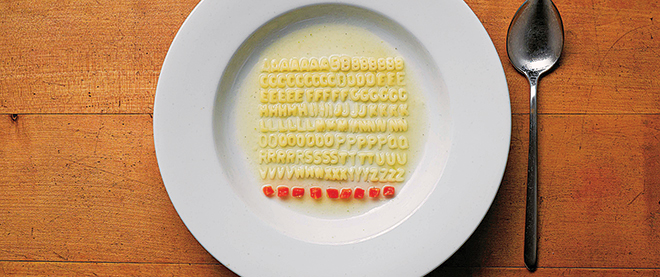The OCD way to organize your house
Ultimate life hacks from an expert who’s put his affliction to work for his clients
Chronicle Books
Share

Updated March 9, 2018
Depending on the day, when Justin Klosky goes to work, he might wind up watching amateur porn or sorting narcotics. As an actor-turned-professional organizer, Klosky is invited into the homes of clients who need help sifting through whatever “stuff” has accumulated around them and threatens to overtake their space and sanity. Sometimes, they are just as surprised as Klosky by what he manages to uncover: “Medicinal marijuana. Stronger drugs. I’ve stumbled onto VHS tapes of homemade sex videos while transferring them to the digital medium. Sex toys are the best—you’ll open up an old suitcase or a box or a bedside table, and people are like, ‘Oh!’ ” Klosky’s response is always the same. “It’s okay. Let’s discuss what you want to do with them.”
That focused commitment to order is apparent throughout Organize & Create Discipline, Klosky’s 2014 book, whose fans include Maxwell Ryan, the founder of the website Apartment Therapy, movie producer Paul Feig, and senior executive VP at Saks Fifth Avenue Suzanne Johnson. It’s based on the principles Klosky uses in his business, O.C.D. Experience. That name has drawn jeers since he started the company in Los Angeles in 2008, for seeming to trivialize obsessive-compulsive disorder. Yet Klosky, who starred in the soap opera Guiding Light but became more famous for helping colleagues get organized off-set, actually battles OCD himself. He insists the intention has always been to turn his affliction into a positive force. “I’m trying to provide, through the crap I’ve had to endure, a solution that worked for me,” Klosky says, “and is working for other people.”
That hardship includes being sexually molested twice as a boy. “I think the true need for [organization] came about to find control in my own life because of those situations,” says Klosky, 33. He believes the trauma of abuse amplified a penchant for tidiness he’s had since youth. “One of my first words was ‘vacoom!’ ” he recalls. “I used WD40 to clean the Formica furniture because it made it shinier. I had cologne bottles stacked in height order.”
Klosky is inclined to get “philosophical” about the causes of disorganization in the lives of his clients. “Nine times out of 10, chaos and mess is truly a symbol of something that’s deep-rooted,” he explains. “Anything from parents getting divorced, going through a horrible relationship, [being] uncomfortable with weight.” Klosky promises that his methods “give people a sense of breathing room”—if individuals are ready to follow through. “The real challenge is, when you remove that mess, how does it affect somebody, and what then do they have to deal with, either inside themselves or in their surroundings?”
In his book, Klosky includes 300 pages of advice by topic, listed alphabetically. Purses should be purged daily; each purse you use should contain its own collection of must-have items such as lip balm and gum. Confine childhood memorabilia to one bin; seal goods in Ziploc bags for protection. When handed a business card, enter the information immediately into your phone, email the person your contact details and return the card. Get a universal remote. Buy the same brand and type of socks so they’re easily matched. Store sex toys and extra batteries where kids can’t find them.
No item is too insignificant to be tackled: Key chains should only include keys that are used every day; extra light bulbs should be labelled for their intended use, then stored. Klosky is also a staunch proponent of the paperless life, and his book features guides on how to digitize everything from photos and music to children’s art and legal files. It is Klosky’s favourite way to organize. “Literally, the entire area that I have for my documents is no bigger than a small Pendaflex [file folder].”
If it all sounds too difficult to achieve, Klosky allows a bit of a reprieve: “You can have one space where you can be chaotic.” Each household is permitted a single junk drawer. But he does offer suggestions about how to keep that area tidy. It’s a compromise on both sides, since Klosky himself doesn’t have one.